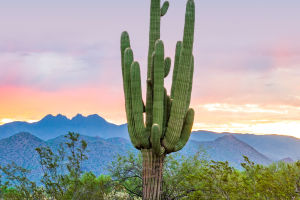A mountain range refers to a mountain body that extends along a certain direction and consists of several ridges and valleys. It is called a mountain range because it is like a vein and has a certain overall nature. So what are the largest mountains on every continent in the world?
Asia: Himalayas
The Himalayas are the highest and most majestic mountains in the world. It is located between China and Nepal in Asia, and is distributed on the southern edge of the Qinghai-Tibet Plateau, starting from Nanga-Parbat in Kashmir in the west and Nanga Bawa at the bend of the Brahmaputra in the east, with a total length of 2,400 kilometers. Among them, more than 110 peaks reach or exceed 7,350 meters above sea level, which are the natural boundary mountains between the East Asian continent and the South Asian subcontinent.
Europe: Alps
The Alps is a famous mountain range in Europe that covers the northern border of Italy, southeastern France, Switzerland, Liechtenstein, Austria, southern Germany and Slovenia. The Alps have 128 peaks over 4,000 meters above sea level, of which the highest peak, Mont Blanc, is 4,808 meters above sea level, located at the junction of France and Italy. The mountains are arc-shaped, 1,200 kilometers long, with an average altitude of about 3,000 meters.
Africa: Atlas Mountains
The Atlas Mountains are mountains in northern Africa. It is 2,400 kilometers long and spans Morocco, Algeria, Tunisia (and includes the Gibraltar Peninsula), and separates the southwestern coast of the Mediterranean from the Sahara Desert. It is the largest folded and fractured mountain area in Africa and part of the Alps.
Oceania: The Great Divide
The Great Dividing Range, a general term for the mountains and plateaus north of New South Wales in eastern Australia. It is located in the north of New South Wales and roughly parallel to the coastline, from Cape York Peninsula to Victoria, stretching about 3000 kilometers, about 160 kilometers to 320 kilometers wide. Its highest peak, Mount Kosciusko, is 2,230 meters above sea level and is the highest point in the country. The ridge is the watershed between the Indian Ocean and the Pacific Ocean, hence the name.
North America: Rocky Mountains
The Rocky Mountains, also translated as the Rocky Mountains, are the backbone of the American Cordillera Mountains in North America. They are composed of many small mountain ranges and are known as the "backbone" of North America. The main mountain ranges extend from British Columbia, Canada to the southwestern United States. The state of New Mexico is more than 4,800 kilometers long from north to south, and it is vast and lacks vegetation. The entire Rocky Mountains is composed of many small mountains, of which there are 39 named. With the exception of the St. Lawrence River, almost all the major rivers in North America originate in the Rocky Mountains, which are important watersheds for the continent.
South America: Andes
The Andes Mountains are located on the west coast of South America, with a length of more than 8,900 kilometers from north to south, making it the longest mountain range in the world. The Andes Mountains are the highest mountains in the world outside Asia, with an average elevation of 3,660 meters. The highest peak is Mount Aconcagua in Argentina, with an elevation of 6,962 meters. It is the highest peak in the Western Hemisphere and the Southern Hemisphere and the highest extinct volcano in the world. The Andes range from Panama all the way to Chile. Running through the western part of the South American continent, it is known as the "backbone of South America".


